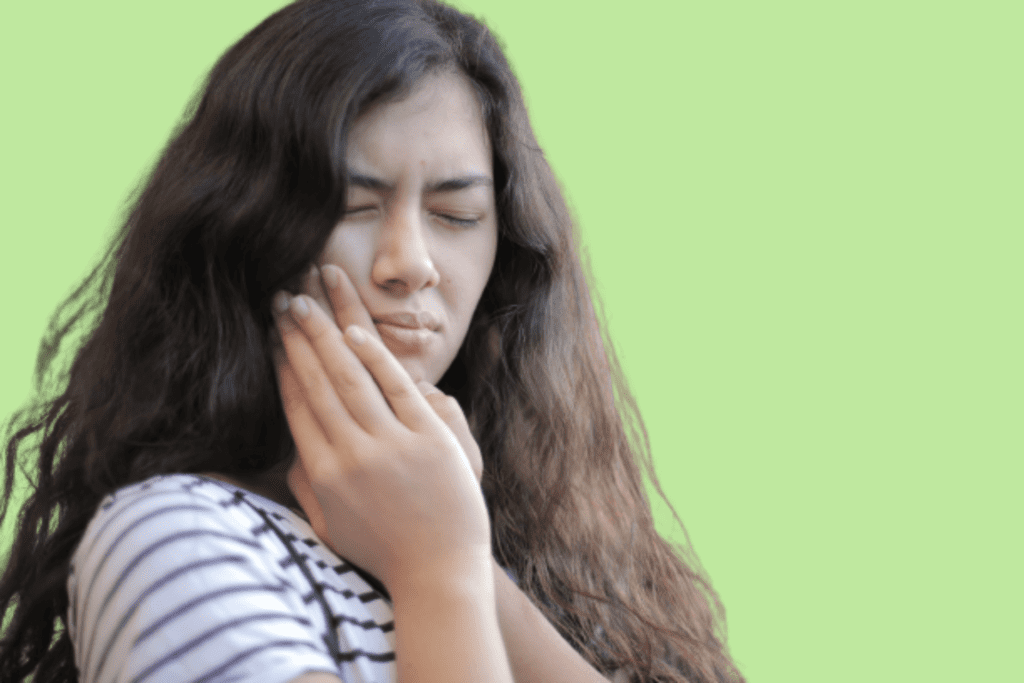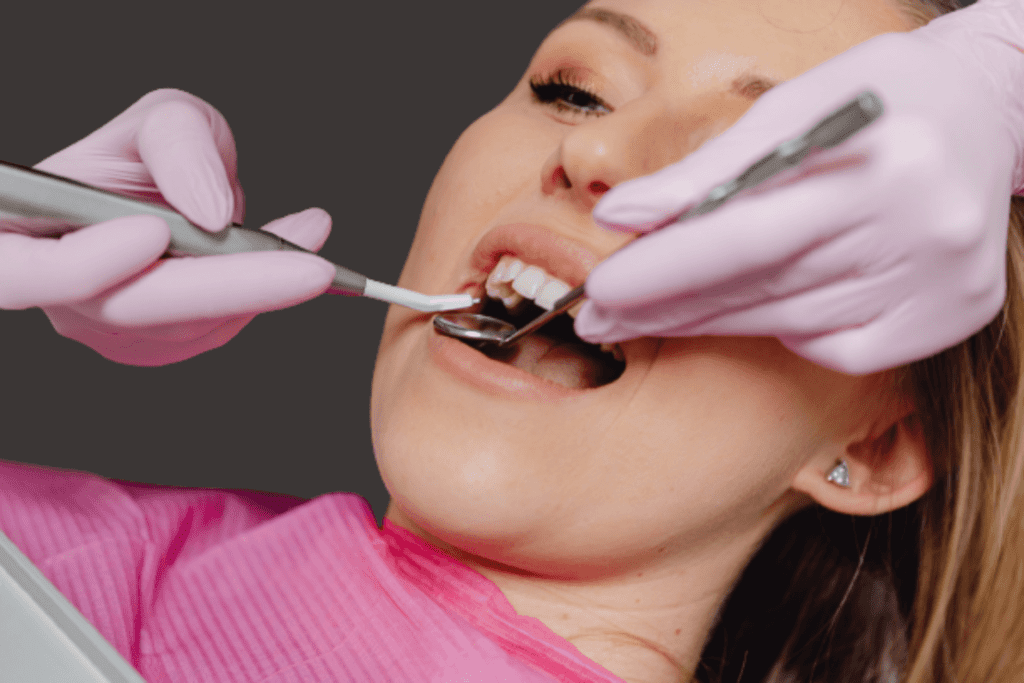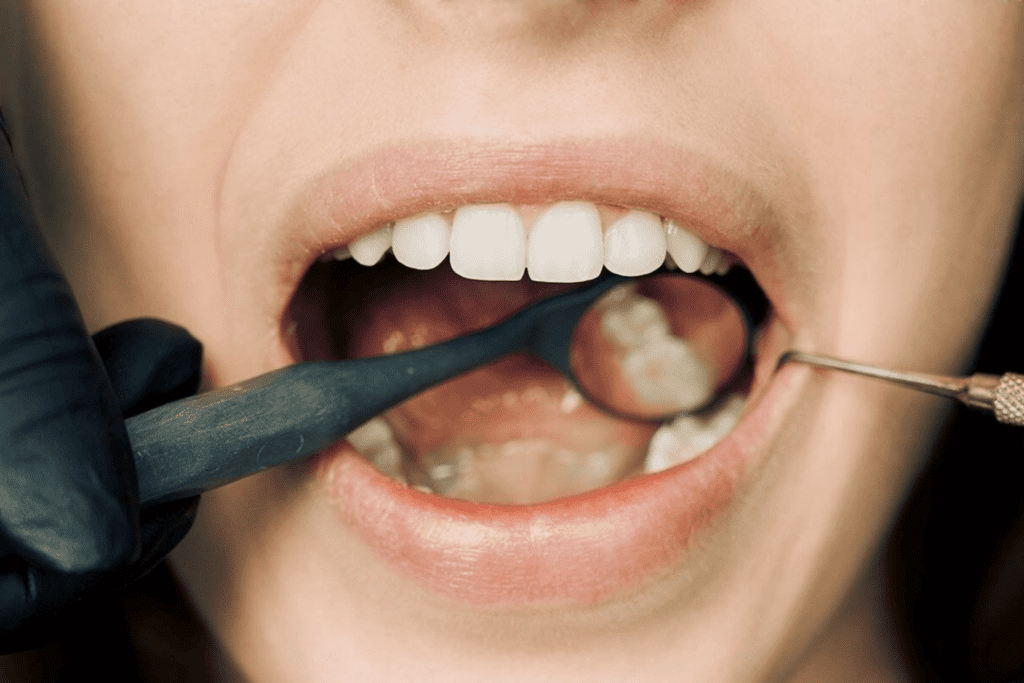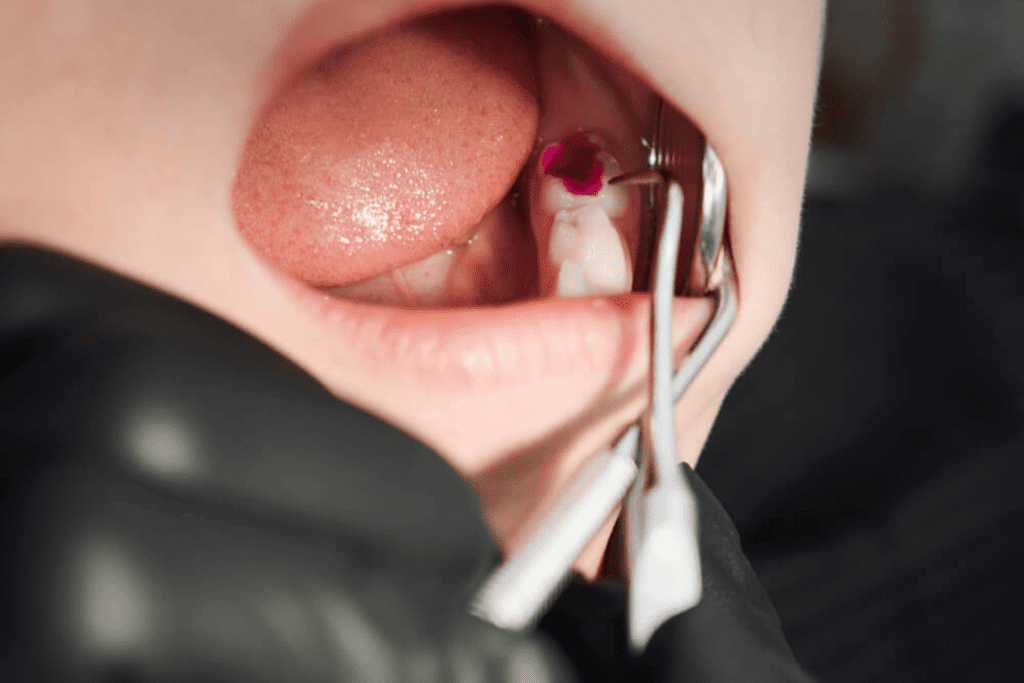What is Teeth Discoloration?
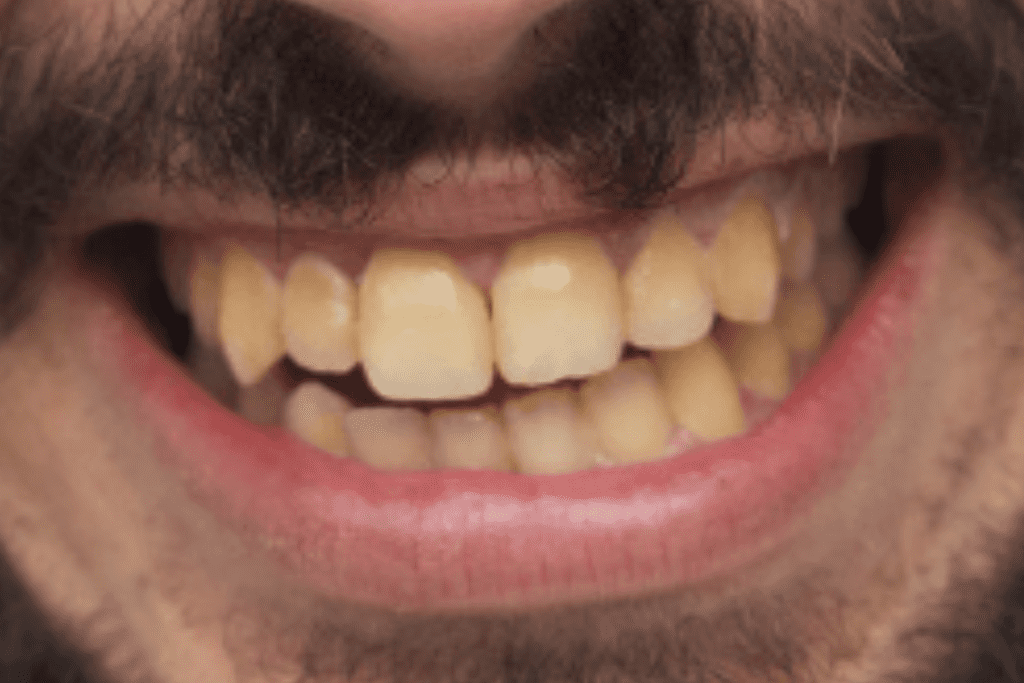
Tooth discoloration is a condition characterized by the alteration in the natural color of teeth, resulting in a noticeable change in their appearance. It involves the staining or darkening of the outer layer of the tooth, known as enamel, or the underlying layer called dentin. This discoloration can manifest as yellow, brown, gray, or even black hues, depending on the cause and severity.
Table of Contents
ToggleTypes of Teeth Discoloration of Teeth
Several types of teeth discoloration can occur. Here are some common types:
1. Extrinsic Stains
These are stains that occur on the outer surface of the teeth. They are often caused by external factors such as certain foods and beverages, tobacco use, and poor oral hygiene. Common culprits include coffee, tea, red wine, and smoking.
2. Intrinsic Stains
These are stains that occur within the tooth structure itself. They can result from various factors, including excessive fluoride intake during tooth development, certain medications (such as tetracycline antibiotics) taken during childhood, trauma to the tooth, and tooth decay.
3. Age-related Stains
As we age, the outer layer of enamel on our teeth naturally wears down, revealing the underlying dentin layer, which is naturally yellower in color. This can make the teeth appear more yellow or discolored.
4. Genetic Discoloration
Some individuals may have naturally darker or more yellowish teeth due to genetic factors. The natural color of your teeth is determined by the thickness and shade of both the enamel and dentin layers.
5. Dental Restorative Materials
Certain dental restorations, such as silver amalgam fillings, can cause localized discoloration of the teeth over time.
6. Systemic Factors
Some systemic conditions and medical treatments can affect tooth color. For example, certain diseases or medical treatments like chemotherapy can cause teeth to become discolored.
Teeth Discoloration Causes
Teeth discoloration can have various causes, including:
Poor Oral Hygiene
Inadequate brushing and flossing allow plaque to build up on the teeth. Plaque is a sticky film of bacteria that can produce acids that erode tooth enamel and cause staining.
Food and Drinks
Certain foods and beverages contain pigments known as chromogens that can attach to the enamel of the teeth and cause staining. Furthermore, the consumption of acidic foods and beverages can lead to the gradual deterioration of tooth enamel, heightening the teeth’s vulnerability to discoloration. Examples of staining culprits include coffee, tea, red wine, cola, berries, and dark-colored sauces like soy sauce and tomato sauce.
Tobacco Use
Both smoking and chewing tobacco introduce nicotine and tar to the teeth. Nicotine is colorless but turns yellow when combined with oxygen. Tar, on the other hand, is naturally dark and can leave brownish stains on teeth.
Medications
Certain medications, especially if taken during tooth development in childhood, can cause tooth discoloration. Tetracycline antibiotics, such as doxycycline and minocycline, can lead to gray or brown stains on the teeth. Antihistamines, antipsychotics, and high blood pressure medications can also cause tooth discoloration as a side effect.
Fluorosis
Fluorosis occurs when a person has been exposed to excessive amounts of fluoride during tooth development, typically in childhood. While fluoride is beneficial for dental health, excessive intake can lead to white or brown spots or lines on the teeth.
Dental Trauma
Trauma to the tooth, such as a fall or a blow to the mouth, can cause internal bleeding or death of the tooth. When the pulp inside the tooth becomes damaged, it can lead to discoloration. The tooth may turn gray, brown, or black as a result.
Aging
As we age, the outer layer of enamel on our teeth naturally wears down, revealing the dentin underneath. Dentin is naturally yellowish, so as the enamel thins, the teeth can appear more yellow or discolored.
Genetic Factors
Some individuals may have naturally darker or more yellowish teeth due to genetic factors. The thickness and shade of the enamel and dentin layers can vary among individuals, influencing the overall color of the teeth.
Systemic Factors
Certain systemic conditions and medical treatments can affect tooth color. Amelogenesis imperfecta and dentinogenesis imperfecta are genetic conditions that can cause intrinsic discoloration of the teeth. Additionally, chemotherapy and radiation treatments can lead to tooth discoloration as a side effect.
Tooth Discoloration-by Color
Tooth discoloration can occur in different colors, indicating various underlying causes. Here are some common tooth discoloration colors and their corresponding causes:
Yellow/Brown Discoloration
- Tobacco use: Smoking or chewing tobacco introduces tar and nicotine to the teeth, which can lead to yellow or brown stains. Tar is naturally dark in color, while nicotine turns yellow when combined with oxygen.
- Certain foods and beverages: Dark-colored foods and drinks can stain the teeth over time. Coffee, tea, red wine, cola, soy sauce, and berries contain pigments called chromogens that can attach to the enamel, causing yellow or brown staining.
- Poor oral hygiene: Inadequate brushing and flossing allow plaque to accumulate on the teeth. Plaque contains bacteria that produce acids, which can erode the enamel and lead to yellowish or brownish discoloration.
- Aging: As we age, the outer layer of enamel naturally wears down, revealing the dentin layer underneath. Dentin is naturally yellowish, so as the enamel thins, the teeth may appear more yellow or discolored.
White Spots/Fluorosis
- Excessive fluoride intake: During tooth development, excessive ingestion of fluoride, typically from drinking water or dental products, can lead to fluorosis. Fluorosis causes white spots or streaks on the enamel, giving the teeth a chalky or opaque appearance.
Gray/Blue Discoloration
- Antibiotics: Certain antibiotics, such as tetracycline and doxycycline, when taken during tooth development, can cause gray or blue-gray stains. These antibiotics can incorporate into the structure of the developing teeth, resulting in discoloration.
- Dental trauma: Trauma to the teeth, such as a fall or a blow to the mouth, can cause internal bleeding or death of the tooth. This can lead to the deposition of substances like blood pigments or breakdown products within the tooth structure, resulting in a gray or blue-gray discoloration.
Black Discoloration
- Amalgam fillings: Silver amalgam fillings contain a mixture of metals, including silver, tin, copper, and mercury. Over time, these fillings can cause localized darkening of the tooth structure surrounding the filling, resulting in black discoloration.
- Dental materials: Some dental materials or restorations, such as metal crowns or metal-based dental work, can cause black discoloration of the teeth. This is more common in cases where metal is visible at the gum line or along the edges of the restoration.
What Vitamin Deficiency Cause Teeth Discoloration?
There isn’t a specific vitamin deficiency directly linked to teeth discoloration. However, certain vitamin deficiencies can indirectly contribute to tooth discoloration by affecting oral health and tooth development. Here are a few examples:
Vitamin D Deficiency
Vitamin D is important for the absorption of calcium and phosphorus, which are essential for healthy teeth and bones. Severe vitamin D deficiency can lead to conditions like rickets in children and osteomalacia in adults, which can affect tooth development and mineralization. In such cases, enamel defects may occur, potentially leading to discoloration or white/brown spots on the teeth.
Vitamin C Deficiency
Vitamin C, also known as ascorbic acid, is crucial for collagen synthesis and the maintenance of healthy connective tissues, including the gums. Severe vitamin C deficiency can lead to scurvy, a condition characterized by gum disease, gum inflammation, and bleeding gums. If left untreated, advanced stages of scurvy can affect the integrity of the gums, potentially causing the teeth to appear discolored as the gums recede.
B Vitamin Deficiencies
B vitamins, including B2 (riboflavin), B3 (niacin), and B12 (cobalamin), are important for overall oral health. Deficiencies in these vitamins can lead to oral health problems such as glossitis (inflammation of the tongue), mouth sores, and oral ulcers. While these conditions may not directly cause tooth discoloration, they can indirectly affect oral hygiene and contribute to overall dental issues.
Sudden Discoloration of Teeth-Causes
Sudden discoloration of a tooth can be concerning and may have several potential causes. Here are some possible reasons for sudden tooth discoloration:
Dental Trauma
A sudden blow or injury to the tooth can cause immediate discoloration. The trauma can damage the blood vessels within the tooth, leading to internal bleeding. The accumulation of blood within the tooth can result in a gray, brown, or black discoloration.
Tooth Decay
If tooth decay progresses rapidly, it can cause noticeable discoloration. As the decay progresses, it can reach the inner layers of the tooth, causing it to appear dark brown or black. The discoloration is a result of the breakdown of the tooth structure and the presence of bacteria.
Dental Infection
Sudden tooth discoloration can be a sign of an infection within the tooth or the surrounding tissues. When bacteria invade the pulp chamber, which houses the nerves and blood vessels, it can lead to an abscess. This can cause the tooth to appear discolored, often with a dark gray or brown hue.
Medications
Tooth discoloration can occur as a side effect of specific medications, including antibiotics or antihistamines. This occurrence is more prevalent among children who are in the midst of tooth development. Medications like tetracycline or doxycycline, when used during tooth development, can cause permanent discoloration, appearing as yellow, brown, or gray bands on the affected teeth.
Dental Restorations
Sudden discoloration may occur if a dental restoration, such as a filling or crown, becomes discolored or damaged. For instance, a metal-based crown may show through the surrounding tooth structure, causing a grayish appearance.
Internal Tooth Bleeding
Spontaneous or unexplained internal bleeding within the tooth can lead to sudden discoloration. This can occur due to various factors, such as blood disorders or certain medications that affect blood clotting.
Tooth Resorption
Internal or external tooth resorption, a condition where the tooth structure is gradually broken down and absorbed by the body, can result in sudden discoloration. The affected tooth may appear darker or exhibit pinkish discoloration.
The Disease that Causes Teeth Discoloration
1. Enamel Hypoplasia
Enamel hypoplasia is a condition in which the enamel layer of the teeth is underdeveloped or thin. It can be caused by various factors, including nutritional deficiencies, infections, trauma, or certain systemic conditions. Enamel hypoplasia can lead to teeth discoloration, such as white or brown spots or pits on the tooth surface.
2. Amelogenesis Imperfecta
Amelogenesis imperfecta is a genetic disorder that affects the development and mineralization of tooth enamel. It can result in teeth that are discolored, ranging from yellow to brown or gray. The enamel may also be thin, rough, or pitted, making the teeth more susceptible to staining and discoloration.
3. Dentinogenesis Imperfecta
Dentinogenesis imperfecta is another genetic disorder that affects the development of dentin, the layer beneath the enamel. It can cause teeth to appear discolored, ranging from translucent or opalescent to a blue-gray or amber color. The teeth may also be weaker and prone to breakage.
4. Erosion
Dental erosion is the loss of tooth enamel caused by acid exposure. Gastroesophageal reflux disease (GERD), frequent vomiting (as seen in bulimia or certain eating disorders), or chronic acid reflux can lead to erosion of tooth enamel. As the enamel erodes, the underlying dentin, which is naturally yellowish, becomes more visible, resulting in teeth discoloration.
5. Chronic Kidney Disease
Individuals with chronic kidney disease (CKD) may experience tooth discoloration. CKD can cause mineral imbalances, leading to altered tooth development and enamel defects. The teeth may appear yellowish or brownish due to mineralization issues.
6. Jaundice
Jaundice is a condition characterized by yellowing of the skin and eyes due to a buildup of bilirubin, a yellow pigment produced by the liver. In cases of severe jaundice, the teeth can also become discolored, appearing yellow or greenish.
7. Hemochromatosis
Hemochromatosis is an inherited disorder that causes excessive iron accumulation in the body. The excess iron can deposit in various tissues, including the teeth, leading to a gray or bronze discoloration.
8. Porphyria
Porphyria refers to a group of rare genetic disorders that affect the production of heme, a component of hemoglobin. Some types of porphyria can cause tooth discoloration, ranging from brown or reddish-brown to a pinkish hue. This discoloration is typically seen in the front teeth.
Teeth Discoloration Treatments
There are several treatments available for teeth discoloration, depending on the cause and severity of the discoloration. Here are some common teeth discoloration treatments:
Professional Teeth Whitening
Professional teeth whitening, performed by a dentist, is a popular and effective treatment for teeth discoloration. It involves the application of a bleaching agent to the teeth to lighten the color. This can be done in-office with stronger bleaching agents or through take-home kits with custom-made trays. Professional teeth whitening can effectively remove stains caused by food, beverages, tobacco, and aging.
Dental Veneers
Dental veneers are customized, thin shells that are bonded to the front surface of the teeth, aiming to enhance their visual appeal. They can be made from porcelain or composite resin and are often used to address severe discoloration that doesn’t respond well to teeth whitening. Veneers can also correct other cosmetic issues like chipped or misaligned teeth.
Dental Crowns
Dental crowns also referred to as caps, are protective coverings designed to enclose and enhance the entire visible portion of a tooth that is damaged or discolored. These crowns are commonly crafted from materials like porcelain, ceramic, or metal alloys. They prove to be highly effective in restoring the appearance of severely discolored teeth, particularly when the discoloration stems from intrinsic factors such as internal staining or dental trauma.
Tooth Bonding
Tooth bonding involves the application of tooth-colored resin material to the tooth surface to improve its appearance. It can be used to treat minor discoloration, fill in gaps, repair chips, or reshape the teeth. The resin is matched to the natural tooth color, providing a natural-looking result.
Internal Tooth Bleaching
Internal tooth bleaching is a procedure used to treat teeth that have become discolored from within, often due to trauma or previous root canal treatment. It involves placing a bleaching agent inside the tooth and sealing it with a temporary filling. The bleaching agent is left in the tooth for a certain period to lighten the internal discoloration.
Lifestyle Modifications
In cases of extrinsic discoloration caused by lifestyle factors like smoking or consuming stain-causing foods and beverages, making lifestyle modifications can help prevent further discoloration. Avoiding or minimizing tobacco use, limiting the intake of coffee, tea, red wine, and other staining substances, and maintaining good oral hygiene practices can contribute to reducing teeth discoloration.
How to Prevent Tooth Discoloration
To help prevent tooth discoloration and maintain a bright, healthy smile, here are some tips:
Practice Good Oral Hygiene
Brush your teeth at least twice a day with fluoride toothpaste and use proper brushing techniques. Additionally, make it a habit to floss daily to eliminate plaque and food particles lodged between your teeth. Good oral hygiene helps prevent the buildup of stains and discoloration-causing substances.
Limit Staining Foods and Drinks

Reduce your consumption of foods and drinks that are known to cause stainings, such as coffee, tea, red wine, cola, dark berries, and soy sauce. If you do consume them, try to rinse your mouth with water afterward or brush your teeth to minimize their contact with your teeth.
Use a Straw
When consuming beverages that may stain your teeth, consider using a straw to direct the liquid away from your front teeth. This can help reduce direct contact and potential staining.
Rinse Your Mouth
After consuming staining foods or drinks, rinse your mouth with water to help wash away any residue that may lead to discoloration.
Quit Smoking and Chewing Tobacco
Tobacco products contain harmful chemicals that not only stain teeth but also increase the risk of gum disease and oral health problems. Quitting tobacco can help prevent tooth discoloration and improve overall oral health.
Drink Plenty of Water
Drinking water throughout the day helps promote saliva production, which aids in maintaining oral health. Additionally, water can help rinse away food particles and reduce the effects of staining substances on the teeth.
Visit Your Dentist Regularly
Schedule regular dental check-ups and cleanings to remove surface stains and plaque buildup. Your dentist can also identify any potential issues and guide you on maintaining a healthy, bright smile.
Consider Professional Teeth Whitening
If your teeth are already discolored, professional teeth whitening treatments provided by a dentist can help restore their brightness. Your dentist can recommend the most suitable whitening method for your specific needs and closely monitor the process to ensure safe and effective results.
Consider Teeth-Healthy Dietary Choices
Consume a balanced diet rich in fruits, vegetables, and dairy products. These foods can help promote oral health and maintain the strength and appearance of your teeth.
Avoid Excessive Fluoride Intake
While fluoride is beneficial for dental health, excessive fluoride intake during tooth development can lead to enamel fluorosis and cause tooth discoloration. Use fluoridated dental products as directed and consult with a dentist about fluoride intake for children.
Wear a Mouthguard during Physical Activities
If you participate in sports or activities that pose a risk of dental trauma, wear a mouthguard to protect your teeth from injury. Dental trauma can lead to discoloration among other issues.
Remember, while these preventive measures can help reduce the risk of tooth discoloration, some factors like genetics, aging, and certain medications may still contribute to discoloration. Consulting with your dentist will provide personalized advice and treatment options to address your specific concerns.
Conclusion
In conclusion, tooth discoloration can have various causes and can be a source of concern for many individuals. It can be attributed to extrinsic factors such as foods, beverages, and habits like smoking, as well as intrinsic factors like aging, genetics, and certain medical conditions. Additionally, vitamin deficiencies, dental trauma, and specific diseases can contribute to tooth discoloration.
While the specific treatment for tooth discoloration depends on the underlying cause and severity, there are several options available. Teeth whitening procedures, dental veneers, composite bonding, dental crowns, and in-office restorations are some of the common treatments used to address tooth discoloration and improve the aesthetics of the teeth.
Preventing tooth discoloration is possible by maintaining good oral hygiene practices, practicing moderation with staining substances, considering dietary choices, and seeking regular dental care. Avoiding tobacco use, using straws, and being mindful of oral health habits can also contribute to maintaining the natural color and appearance of teeth.
If you have concerns about tooth discoloration, it is advisable to consult with a dentist or dental professional who can evaluate your specific situation and recommend appropriate treatment options. By taking proactive steps and following good oral care practices, you can help prevent tooth discoloration and maintain a healthy, bright smile.
Resources
Image Designed by freepik
Reference
https://www.ncbi.nlm.nih.gov/pmc/articles/PMC1079878/
https://www.fda.gov/drugs/bioterrorism-and-drug-preparedness/questions-and-answers-consumers-doxycycline
https://www.nature.com/articles/4800959
https://pubmed.ncbi.nlm.nih.gov/10825865/

